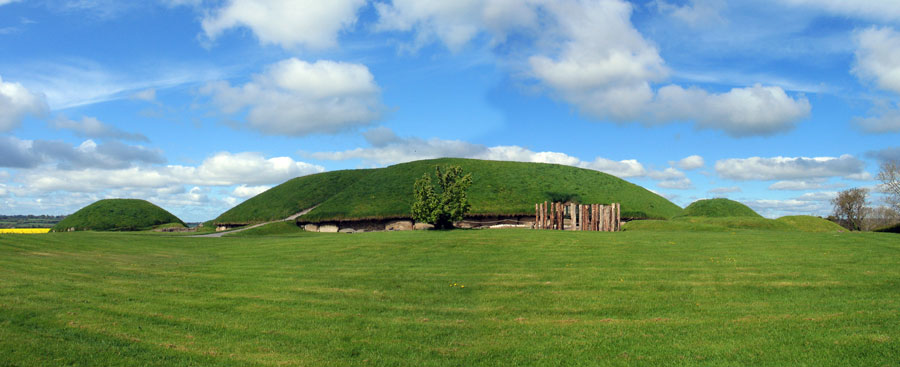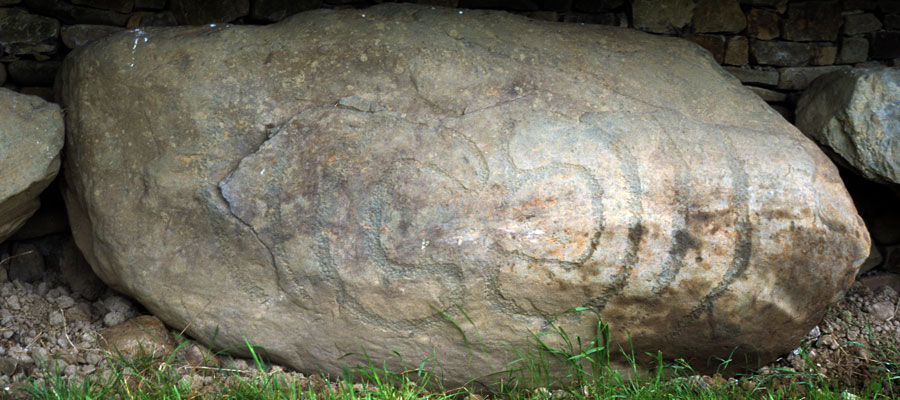Knowth - Satellite Site 13
Site 13 at Knowth was invisible before it was uncovered by excavation. The mound was about thirteen meters in diameter, and thirty-one kerbstones were found in their orininal positions. The passage and chamber are bottle-shaped and undifferentiated, and in total are six meters long, with a sillstone set about halfway dividing passage and chamber. The passage is oriented about 15° east of south, almost the same angle as Site 12.
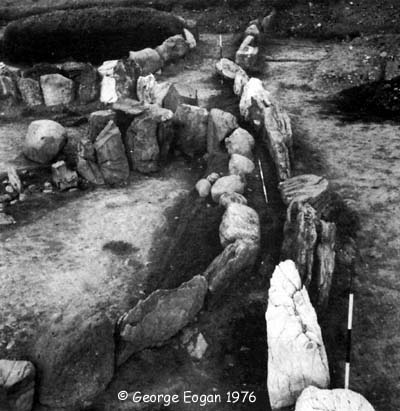
Site 13 almost touches the kerb of the great mound, and is obviously an older site, as the kerb of the huge mound is indented to accomodate the smaller mound, as can be seen in the excavation picture above. Engravings were found on one passage stone and four kerbstones; and there is art on another possible displaced kerbstone which was found nearby. The only finds were two pieces of flint.
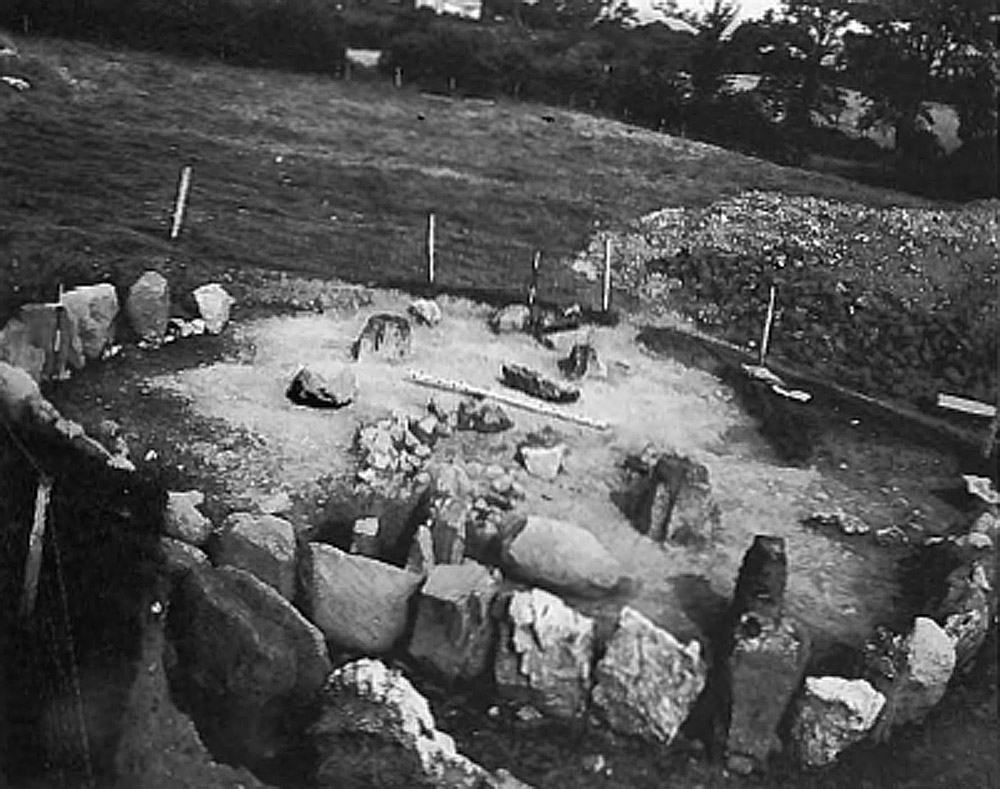
Knowth - Satellite Site 14
Knowth 14 is one of the few satellites that was visible before the major excavations took place. George Coffey, an early megalithic researcher, noted kerbstones peeping through the grass in 1892, and R. A. S. Macalister investigated the site in 1943. The monument is situated on the north side of the great mound, and like Site 13, which is right beside it, almost touches the kerb of Site 1.
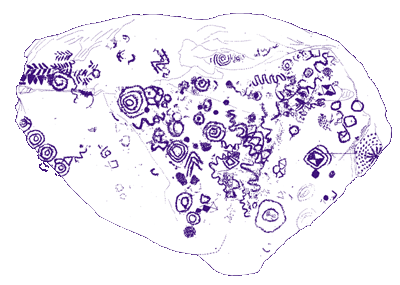
The hidden face of the right-hand chamber wall orthostat from Site 14. Hidden art appears to point to some kind of ritual use of the site, such as astronomical sighting, before the mound is raised. Drawings © George Eogan.
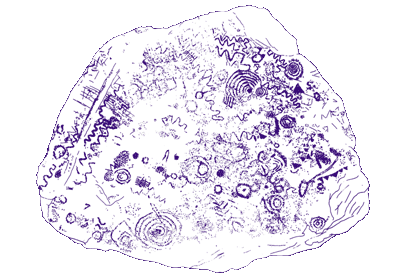
The mound is just over thirteen meters in diameter with twenty of the original kerbstones remaining. The kerbs are sitting on the old ground surface, and some have packing stones placed under them to keep the tops level. The passage and chamber measure 5.5 meters long, and are seperated by a sillstone. The chamber is two meters long, and the sides are formed by two massive slabs; a displaced capstone or corbel was also found on the site. The passage is aligned to the south-southwest. The passage shows signs of a fire having been lit in it at some stage.
Five of the chamber stones and three kerbstones bear decoration. The only finds were two flint scrapers. Both sides of a chamber stone are illustrated above; this is the most decorated stone of all Knowth's satellites, and has what appears to be a small sundial-type carving in the top right illustration.
Knowth - Satellite Site 15
Site 15 is the largest satellite at Knowth, measuring about twenty-three meters in diameter which is as large as the cairns at Carrowkeel and Loughcrew, and the majority of the Carrowmore circles.
The monument is located to the north-east of and about ten meters out from the kerb of the great mound. The mound survived to almost a meter high; twenty-six kerbstones were found, nineteen of which were in their original positions; this is probably about half of the original total of kerbs. The kerbstones were completely removed from the west and north side of the mound. The site was much disturbed during the Bronze Age when burials were inserted into the mound, and later during the Christian era when souterrains were built through the site. The portion of the kerb facing the great mound is flat.
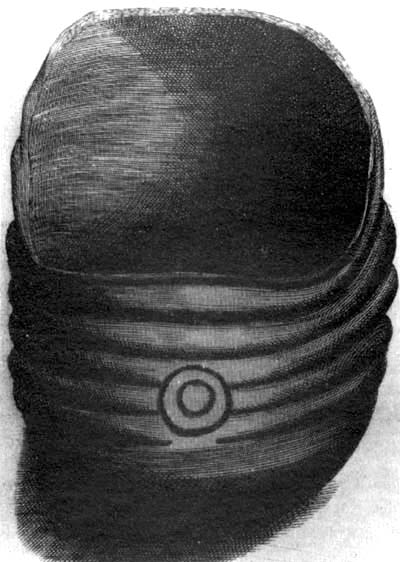
There is a bottle-shaped undifferentiated passage and chamber which measures just over nine meters in length, and is divided by three sillstones. Most of the passage and chamber stones were found in their original positions, but there were no capstones or corbels present. Many of the stones from the smaller mounds at Knowth were reused for roofing the souterrains in the early Christian period. The cremated remains of two or three people were found within the chamber. Also found were some bone beads, shards of pottery which included Carrowkeel ware, and twenty-six pieces of flint. Three of these were worked, the rest were waste pieces.
Art was found on three of the interior stones, one of which is a sillstone, and two of the kerbs. The orientation is to the southwest, and seems to be aligned to the winter solstice sunset; the mound may be a smaller and earlier version of Dowth South.

